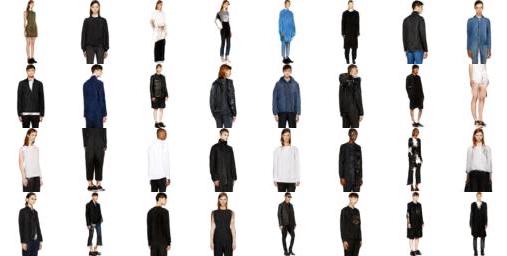import torch
use_gpu = True if torch.cuda.is_available() else False
model = torch.hub.load('facebookresearch/pytorch_GAN_zoo:hub', 'DCGAN', pretrained=True, useGPU=use_gpu)
The input to the model is a noise vector of shape (N, 120) where N is the number of images to be generated.
It can be constructed using the function .buildNoiseData.
The model has a .test function that takes in the noise vector and generates images.
num_images = 64
noise, _ = model.buildNoiseData(num_images)
with torch.no_grad():
generated_images = model.test(noise)
# let's plot these images using torchvision and matplotlib
import matplotlib.pyplot as plt
import torchvision
plt.imshow(torchvision.utils.make_grid(generated_images).permute(1, 2, 0).cpu().numpy())
# plt.show()
You should see an image similar to the one on the left.
If you want to train your own DCGAN and other GANs from scratch, have a look at PyTorch GAN Zoo.
Model Description
In computer vision, generative models are networks trained to create images from a given input. In our case, we consider a specific kind of generative networks: GANs (Generative Adversarial Networks) which learn to map a random vector with a realistic image generation.
DCGAN is a model designed in 2015 by Radford et. al. in the paper Unsupervised Representation Learning with Deep Convolutional Generative Adversarial Networks. It is a GAN architecture both very simple and efficient for low resolution image generation (up to 64x64).
Requirements
- Currently only supports Python 3


